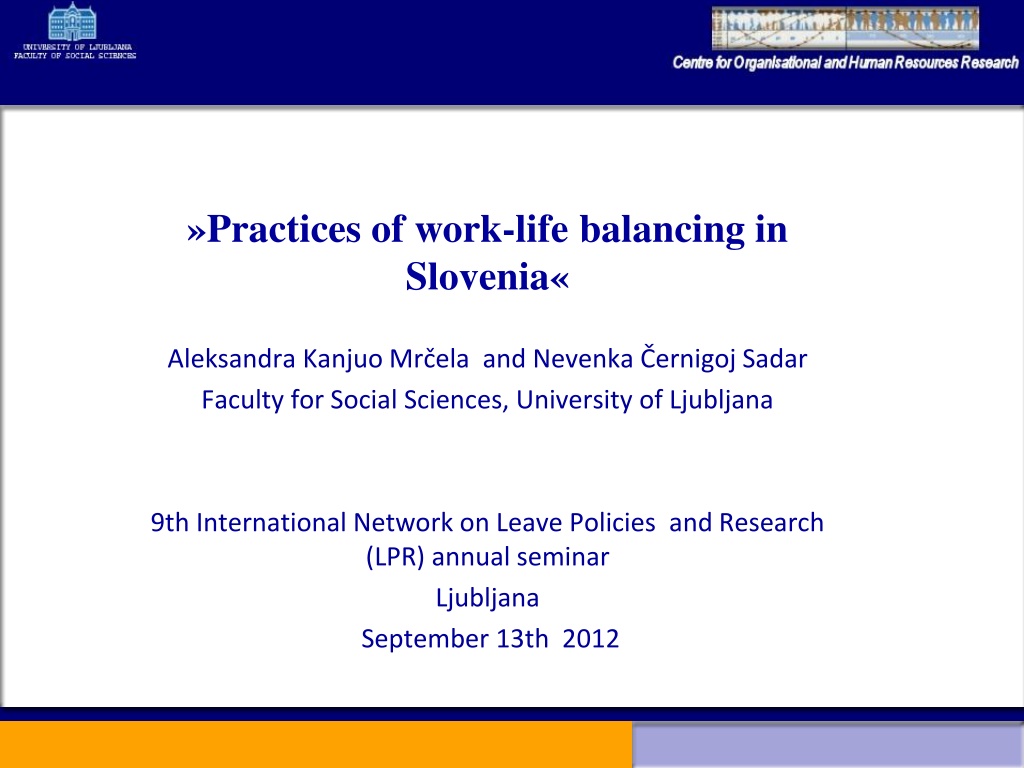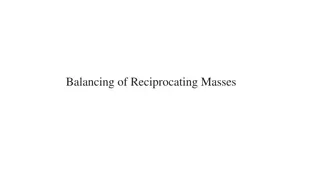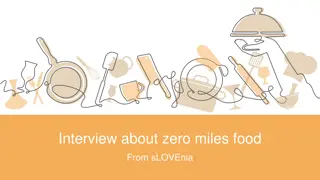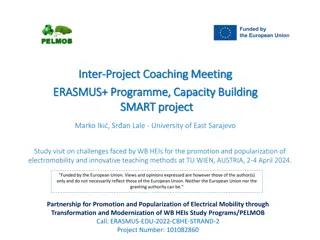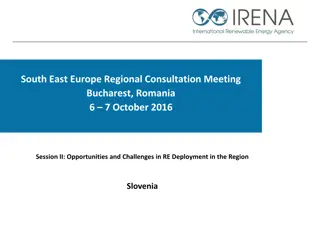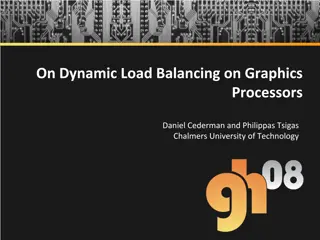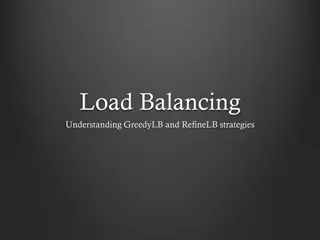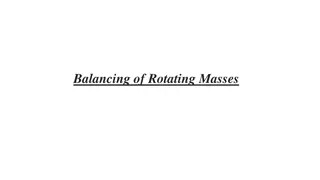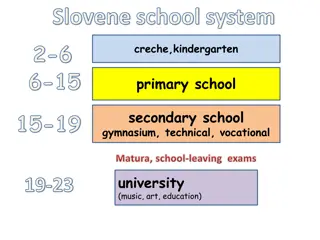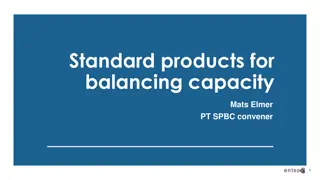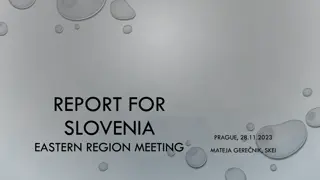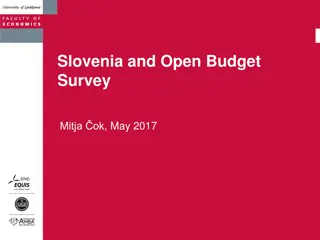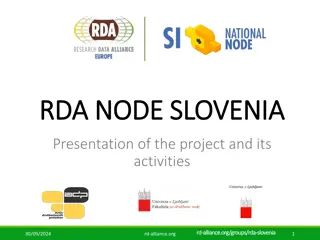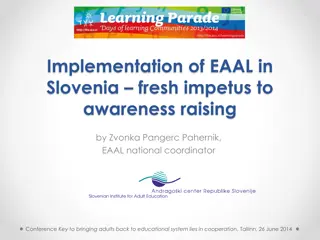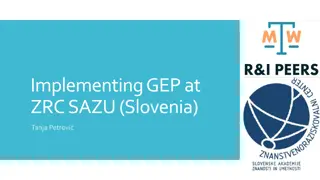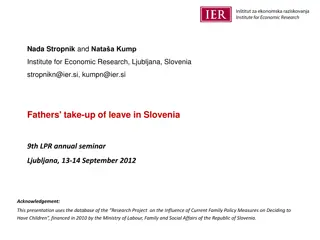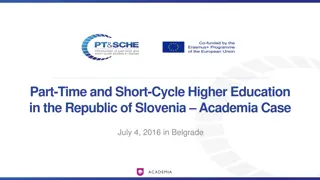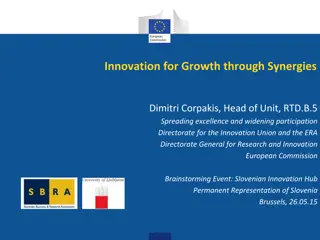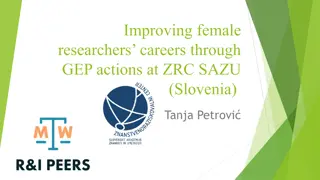Work-Life Balancing Practices in Slovenia
Exploring the capabilities of individuals in reconciling paid work and parenthood in Slovenia against the economic background of transitioning to capitalism and crisis. The study focuses on gender equality objectives and challenges, organizational values, flexibility, and societal changes affecting work-life balance. Research methodology includes policy analysis, statistical data review, and surveys targeting parents of small children. The Slovenian context highlights a dual-earner family model, state support for parental leave, and women's high labor force participation. The analysis discusses gender inequality in paid work and caregiving, with women often bearing primary responsibility for childcare despite positive social policy developments.
Download Presentation

Please find below an Image/Link to download the presentation.
The content on the website is provided AS IS for your information and personal use only. It may not be sold, licensed, or shared on other websites without obtaining consent from the author.If you encounter any issues during the download, it is possible that the publisher has removed the file from their server.
You are allowed to download the files provided on this website for personal or commercial use, subject to the condition that they are used lawfully. All files are the property of their respective owners.
The content on the website is provided AS IS for your information and personal use only. It may not be sold, licensed, or shared on other websites without obtaining consent from the author.
E N D
Presentation Transcript
Practices of work-life balancing in Slovenia Aleksandra Kanjuo Mr ela and Nevenka ernigoj Sadar Faculty for Social Sciences, University of Ljubljana 9th International Network on Leave Policies and Research (LPR) annual seminar Ljubljana September 13th 2012
The purpose of the analysis: understanding capabilities of individuals for reconciling paid work and parenthood economic context: transition to capitalism + crisis gender context: declaration of equality and the objective of women s emancipation, still gender segregation and overburden of unpaid work
Conceptual frames of reference: - Capability approach (Sen, 1995, 1999; Agarwal et al., 2005; Hobson & Fahlen, 2009) - Changing gender roles/experiences in private and public spheres of life and cultural/policy contexts (Fagan 2004; Crompton, 2006; Hobson et al, 2002, Pfau-Effinger, 2005) - Organisational values/culture (Thompson et al, 1999); Flexibility and organisational/social changes (Pollert, 1991, Bradley, 2000, Hochschild, 2003)
Research assumption: Capabilities of employed parents for balancing out paid work and parenthood are embeded in the interplay of resources at the individual, organisational, institutional and normative/societal levels.
Methodology: - Analysis of policies related to parenthood - Analysis of statistical data - Rich surveys data (parents of small children and young people)
Slovenian context Dual-earner family model Legacy of state support for parental leave and childcare arrangements Still high labour force participation of women (60.9 % in 2011) Women are in full-time employment (only 13.3 % PTE in 2011; FTE employment rate 59.0 % in 2011)
Gender (in)equality in paid work and care work Public discourse dual-earning family, but women primary responsible for small children Economic situation worsening after transition, but positive developments of social policies - paternal leave+Barcelona targets
Policies related to parenthood Organisation level Legislative The certificate Family Friendly Enterprise in Slovenia subsidised public child care Maternity leave: 15 weeks (100%) Paternity leave: 15 days (100 %) used by majority of fathers + 75 days (basic insurance paid) Parental leave: 260 days (100%, reduction to 90%) used by mothers family friendly measures (e.g. time, space and work organization flexibility; information and communication policies; changes in organisational; financial and other benefits; family support services). N. of organisations obtained the basic certificate: 32 (2007), 17 (2008), 11 (2009), 4 (2010), 33 (2011), 13 (2012); until May 2012 27 organizations got full certificate Part time work for parents right exists - rarely used The impact of motherhood on women s employment -1.9 pp (2011)
Forced choices: acceptance of high intensity of work and low quality of work organisation Work must be done...mostly you put work in the first place, other things are not so important (father, 34, retail) Work must be done, it is your problem how much time you need for it (woman, 28, computer industry)
Lack of choice for mothers and fathers: workplace discrimination and mistreatment because of parenthood My wife is highly educated, but many employers said Two young children? No, thank you! (father, IT industry) When I was pregnant with a second child, they withdrew a proposed promotion (mother, retail) and gendered expectations: They frowned at me even when I took just these two days after the childbirth, so I did not take any more (father in retail)
Conclusions: - importance of economic situation: intensification of working lives , pressures especially strong for parents with small children and these pressures are gender specific; - importance of social policies and social expectations (eg. Parental and paternal leave cognitive shifts at individual and collective level).
dominance of paid work over other parts of life and a double burden of paid and unpaid work for women increase in flexibility/uncertainty of employment social policies + economic situation + social norms and expectations=capabilities of Slovenian parents interplay between individual agency gap to make claims for WLB, and institutional context, organisational work cultures that reflect widespread assumptions about gender roles
